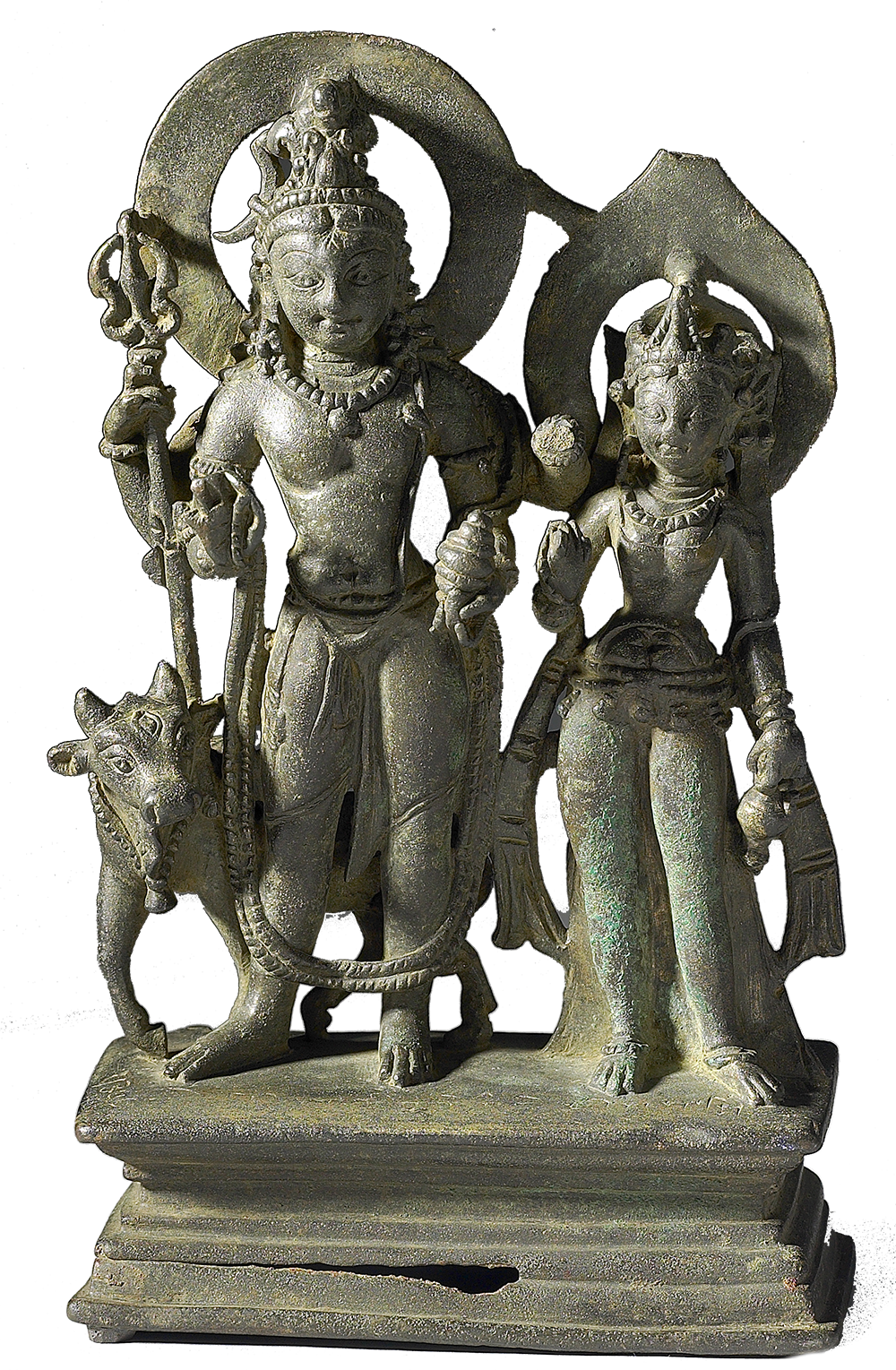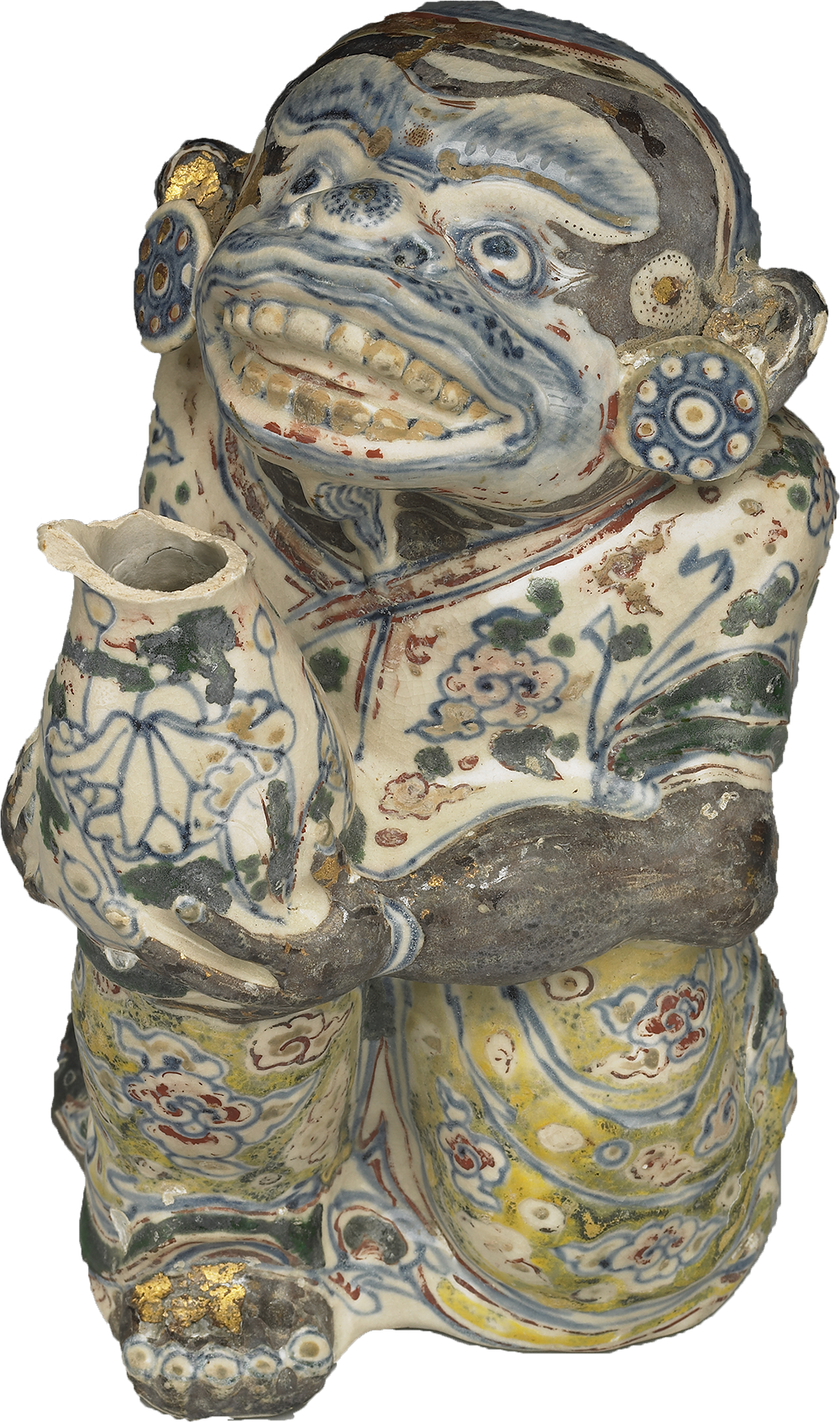The Ganges River flowing through the Indian subcontinent gave rise to the long and established culture of India. Several important religions that came to have a major influence on not only Asia but also the world originated there, including Hinduism, Buddhism, and later Sikhism. This great river civilization gave birth to, nourished, and allowed them to flourish. Accompanying the flow of religions, peoples, and materials, the influence of Indian culture also spread to regions in East, West, and Southeast Asia, bringing derivations and developments that yielded great inspiration for the arts and cultures of those places.
On display here are two fascinating and stylistically unique works of art, "Umā-Maheśvara" from 10th-century Kashmir and "Hanuman Figure in Underglaze Blue and Overglaze Colors" from 15th-century Vietnam. It is hoped that audiences can appreciate the beauty of Indian and Vietnamese art as well as the allure of the literary and religious traditions behind these two areas. People can also understand better the intimate sparks of exchange between South and Southeast Asia as well as experience the pluralism of Asian styles!
Umā-Maheśvara
- Kashmir or Himachal Pradesh, India
- 10th century
This sculpture, donated by Mr. Peng Kaidong, depicts the great Hindu god Śiva with his spouse Pārvatī (also known as Umā) and Śiva’s mount, the sacred ox Nandi. The tender expression of the figures reveals a smile of compassion, and Nandi appears to peek from behind the couple to give the scene an interesting sense of movement and life. This theme has a special name, "Umā-Maheśvara," which translates as "Umā and the Great Lord," and is also found in the areas of Southeast Asia where Hinduism prevailed.
Hanuman Figure in Underglaze Blue and Overglaze Colors
- Vietnam
- 15th century
This porcelain was recovered from the waters off Vietnam and depicts the mythical figure related to Hanuman in a pose of offering. Though having the form of a monkey, the pose and clothing are those of a human. Also armed, a powerful figure is presented as well. The underlying decoration of the piece is underglaze blue, on top of which is gold tracing and overglaze colors that give it extraordinary value.
Hanuman has a special place in the folk beliefs and literature of India. In the Hindu epic Ramayana, a large part is devoted to stories of Hanuman’s heroic adventures. The image of Hanuman as a powerful god and protector is not only the stuff of Indian art and decoration, it even later became the source for the character Sun Wukong, the Monkey King, in the classic Chinese novel Journey to the West. For this Vietnamese porcelain, the local potter perhaps adopted the great magical powers of the Hindu god Hanuman to convey the idea of auspiciousness and protection.

